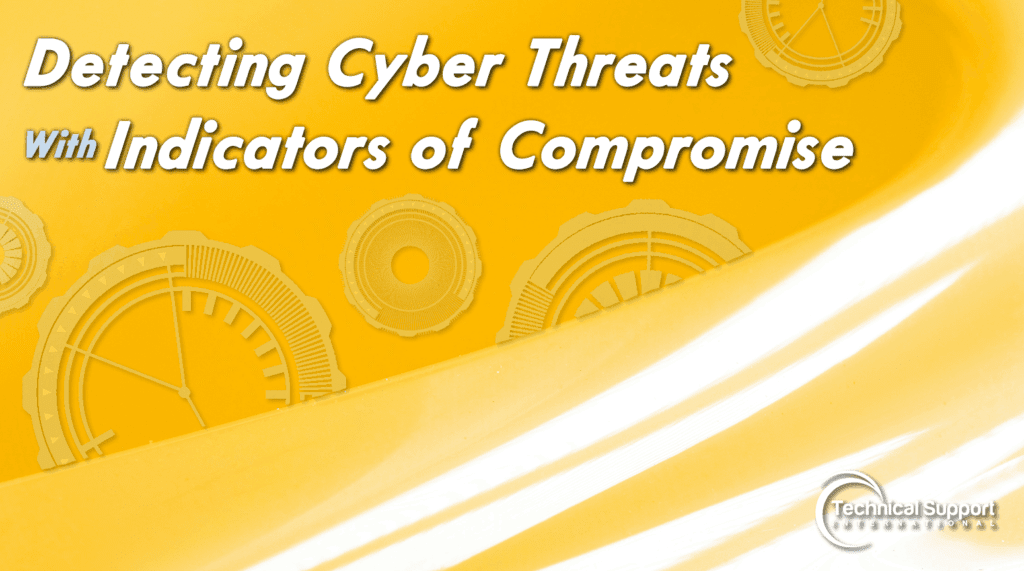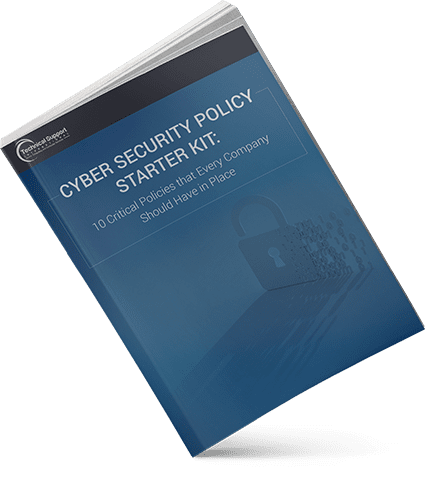Blog

Detecting Cyber Threats with Indicators of Compromise
Christopher Souza | CEO
As cyber threats continue to evolve in sophistication and frequency, detecting intrusions early is critical. One of the most powerful tools in your cybersecurity arsenal is the ability to recognize and act on Indicators of Compromise (IOCs), which are signs that an attacker has breached or is actively attacking your environment.
What Exactly Are IOCs?
IOCs are digital artifacts or traces left behind when an adversary has penetrated a system, network, or endpoint. They can include file hashes, command-and-control (C2) domains, malicious IP addresses, registry keys, filenames, abnormal log entries, or unusual outbound traffic.
Why IOCs Matter
Acting on IOCs early can reduce the damage, costs, and downtime that your organization may face otherwise. These benefits include:
- Faster detection and response: Early recognition allows containment and remediation.
- Forensic readiness: IOCs help trace the scope, origin, and method of attack.
- Supply chain protection: IOCs can spread through partners and subcontractors.
- Operational resilience: Using IOCs helps design stronger monitoring, logging, and alerting frameworks.
You May Already Be Aware of Several IOCs
- Emails being sent that users report not sending.
- Login notifications from locations users haven’t been to.
- Pop-ups in a user’s browser.
The Real IOC’s Are the Ones You May NOT Be Aware Of
- Small bits of data leaving the network following known patterns.
- Email rules being created to hide detection.
- Pattern changes for logins like new MFA methods registered for users.
IOCs like these give attackers persistent access to your data. The difference in detecting these IOCs early in the attack lifecycle could be the difference in attackers having weeks to plan their assault, and attackers being shutout within minutes of detection.
How IOCs Fit into a Mature Cybersecurity Framework
Security teams rely on IOCs to figure out when something is wrong in an organization’s IT environment. Embedding IOCs into your security architecture maximizes its value. Focus on these areas:
- Logging and visibility: Log endpoints, network traffic, authentication events, and system changes. Clean, searchable logs are essential.
- Baseline behavior and anomaly detection: Establish normal activity and use tools that spot deviations.
- Threat intelligence integration: Feed external IOC data into your monitoring platforms, enriched with context about actors and campaigns.
- Prioritization and response workflow: Categorize IOCs by impact and integrate them into incident response playbooks.
- Continuous improvement and sharing: Post-incident, add new IOCs to your detection stack and participate in intelligence-sharing groups.
Common Mistakes to Avoid
Even the most experienced organizations can struggle with IOCs. A common error is treating IOCs as the only signal without monitoring user or system behaviors, which leaves gaps in threat detection. Security teams may also be overwhelmed by irrelevant IOC alerts, wasting time and resources on low-priority events. Another frequent pitfall is failing to update IOC libraries, allowing outdated threat information to reduce effectiveness. Finally, skipping practice and validation exercises prevents teams from understanding how to respond effectively when an IOC is detected. Addressing mistakes like these before they occur ensures your IOC program is both actionable and resilient.
Partnering with Experts
Building a robust IOC detection and response capability in-house can be resource-intensive. If you go with TSI, we bring:
- Security architects and compliance professionals experienced with threat intelligence and federal contracting
- Integrated monitoring platforms that ingest and enrich IOC feeds
- Consultative services embedding IOCs into full-cycle cyber defense strategies
- Scalable support for evolving threats
What Your Organization Should Do Next
Start by reviewing your current IOC readiness to identify gaps in logging, monitoring, and response. Make sure threat intelligence feeds are current and integrate them into your detection processes. Running a brief tabletop exercise to test your alerting and response workflow also helps ensure your team can act quickly and effectively if a real compromise happens to occur.
Don’t Let an IOC Turn Into an SOS
Indicators of Compromise are vital to detecting and mitigating cyberattacks. Embedding IOC awareness, monitoring, and response into your security program minimizes impact and helps maintain regular operations. For even more information on IOCs, our partners at Arctic Wolf wrote their own blog going over even more ways to understand their many indicators. We encourage you to check it out!
As always, TSI can help integrate IOC detection into your cybersecurity infrastructure. Contact our team today to ensure your organization is protected and stays alert.
About Technical Support International
TSI is 37-year old cybersecurity (MSSP) and IT support (MSP) company specializing in helping DIB organizations address their NIST 800-171 and CMMC compliance obligations. As a CMMC-AB Registered Provider Organization (RPO), TSI offers a complete NIST 800-171 and CMMC support solution to help guide our clients toward a successful certification audit and provide the assurance that they’re adhering to these expansive compliance requirements.
Categories
- Backup & Disaster Recovery
- Business Operations
- Case Studies
- Cloud Services
- Cyber Security
- Employee Spotlight
- Finance & Budgeting
- Glossary Term
- Governance & IT Compliance
- Managed Services
- Mobile Device Management
- Network Infrastructure
- NIST 800-171 & CMMC 2.0
- PCI
- Podcast
- Project Management
- TSI
- Uncategorized
- vCIO
Cyber Security Policy Starter Kit:
10 Critical Policies That Every Company Should Have in Place



